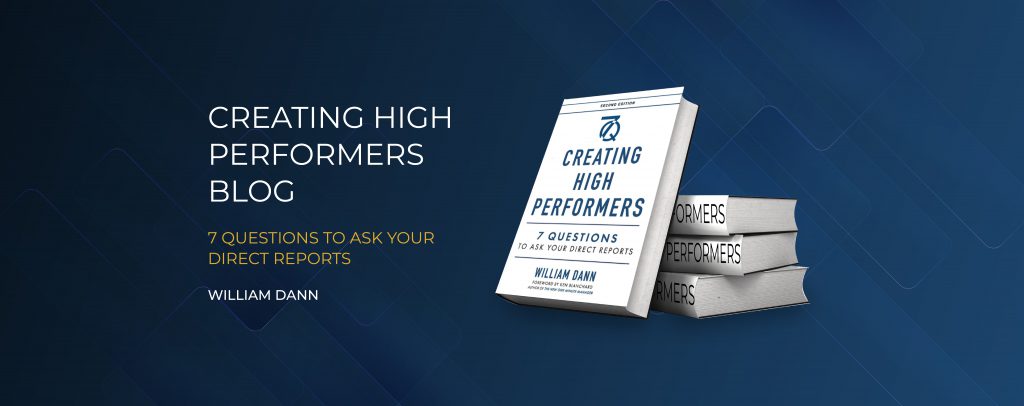- March 26, 2021
- Posted by: andreag
- Category: High PerformanceLeadershipPerformance Management


Employee engagement surfaced in the management lexicon in the early ’90s. Since then, it has become an established concept as numerous studies have linked the level of engagement to both employee and organizational performance. One study comparing the performance of engaged vs. non-engaged workforce revealed a 200% increase in performance when workers are engaged. Gallup defines engaged employees as “those who are involved in, enthusiastic about, and committed to their work and workplace.”
Commonly organizations measure engagement using employee surveys. Progress has been slow as indicated in the Gallup engagement survey, conducted annually for over twenty years, finding 38% of workers engaged in May of 2020 compared with 26% in 2000. Not very impressive gains.
More recently, the concept of employee experience, defined as “the overall experience that employees have with their employers has become an area of focus. This experience is influenced by every interaction employees have with their organizations, from their first contact as a potential recruit to their final interactions….. whether as an employee or former employee”. Data on employee experience is equally underwhelming with less than half of employees reporting their experience to be “good”.
So, what is or is not going on, and why? There are numerous studies that lay out the barriers or deficiencies that lead to low engagement/experience scores. The themes include the following:
- Poor work-life balance (essentially employers not respecting the need for that balance)
- Toxic work environment
- Lack of clarity
- No sense of community
- Lack of regular one-on-ones with employees
- Lack of development opportunities
- Lack of appreciation
A search of literature for effective employee engagement strategies to counteract poor engagement/experience reveals the following recommendations:
-

. Communicate and live core values and vision
- Establish career paths
- Recognize top performers
- Promote honest feedback
- Increase accountability
- Listen
- Etc., etc., etc.
Strategies almost entirely focus on designing yet another organization-wide “program” implemented by HR to solve the problem. But talk to anyone in organizations and examine the literature on rates of successful change and you find that two-thirds of “programs” fail and there is widespread cynicism whenever a new program is announced.
I believe incorrect focus explains the slow progress in improving engagement and experience scores. A 2014 study published in Officevibe found that 75% of those leaving organizations are leaving their manager and not their job. Gallup found the same in a Dec. 2017 report. If organizations focused on improving people management of managers through targeted training, coaching, and mentoring, engagement scores would rise dramatically.
What’s missing in management practice? The failure to establish meaningful ongoing relationships between manager and employee. You shouldn’t need surveys to tell you employees are not engaged, managers should be dialoguing with their employees on an ongoing basis to measure engagement and taking steps to improve it where deficient.
Why doesn’t management practice improve? Here are some contributors:
- Technical superstars are promoted to management, many of whom don’t value or have expertise in people management, and some don’t really want it.
- Once promoted, first-time managers are rarely given training, coaching or mentoring. The belief seems to be that a technical expert can transfer skills to anyone assigned.
- Often there is an inability of technical experts to attain mutually beneficial relationships with employees.
- Organizations expect front-line managers to continue to produce results themselves rather than produce producers
The result is that employees lack clear expectations, have no clear pathway for advancement and see the organization as not interested in or valuing them.
In my book, Creating High Performers-7 Questions to Ask Your Direct Reports , I sought 1) to give uncertain managers greater certainty about what they need to deliver in order to improve performance and 2) to provide a tool to determine whether underperformance in an employee was the result of the supervisor’s inaction or a choice the employee was making. Having now trained and coached managers in numerous organizations on the methods from the book, they have proven successful in achieving both objectives.
The second edition of the book (now available at most on-line retailers), I address many of the questions that have arisen from managers trying to put the methods to work, delve more deeply on what managers need to produce and talk about the impact of improved management practice on organizational culture, i.e., employee engagement.
I believe the path to better engagement is rather straightforward and simple. Empower and hold accountable managers at all levels to 1) establish effective relationships with every employee in their charge and 2) design and execute individualized action plans to get employees to their full potential and career goals.
What’s been your experience? Join our conversation and share the insights you have on employee engagement.



